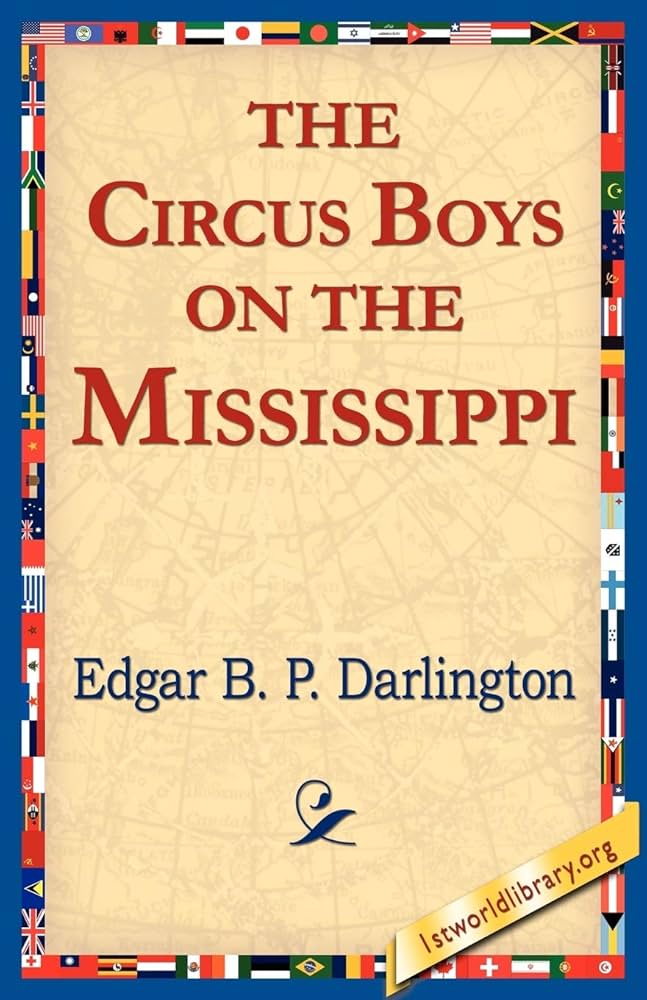Chapter II — The Circus Boys on the Mississippi
byChapter II throws readers directly into the heart of the circus’s backstage world, where performances are not the only things demanding balance and bravery. Inside the dressing tent, a tense confrontation unfolds between Diaz, a hot-headed clown, and Teddy, whose bold antics have rubbed the wrong people the wrong way. Miaco, the seasoned head clown and a loyal supporter of the Circus Boys, quickly steps in to defuse the scuffle, warning Diaz to stand down. Phil, drawn into the fray, attempts to keep peace without letting tensions boil over. Despite the interruption, Miaco’s presence holds authority, signaling to everyone that respect must be preserved. His threat to report Diaz to Mr. Sparling makes it clear that the circus runs on more than just performance—it runs on trust, hierarchy, and professional boundaries that must not be crossed. With order restored, preparations for the night’s show resume.
As twilight draws the audience to their seats, energy builds within the tent. Performers focus on their routines, wiping away traces of earlier conflict. Teddy’s routine with January brings his familiar mix of comedy and control, showing off not just tricks but a real rapport with the animal. Phil, meanwhile, flies through the air on the trapeze with ease, his poise contrasting the chaos of the earlier scene. Their acts complement one another, offering the crowd variety and spectacle while masking the emotional weight of what happened behind the curtain. The boys remain professional, channeling tension into performance with seamless showmanship. Even Diaz, lurking from the sidelines, can’t disrupt the rhythm they’ve created. Their ability to focus under pressure speaks volumes about their discipline and love for the circus.
Later in the show, the spotlight shifts to a stunt that stirs laughter and surprise in equal measure. The audience is dared to stay atop January for a reward, a test many enthusiastically fail. The donkey, stubborn and wily, bucks off volunteers with precision, leaving onlookers in stitches. But when Manuel steps forward—a surprising challenger and Diaz’s assistant—the act takes a twist. His grip and tenacity surprise everyone, including Teddy. January fights to dislodge him, but Manuel endures, making the performance one of the night’s unexpected highlights. It’s more than a gimmick; it’s a symbol of how quickly power can shift in the ring. The crowd roars with approval, caught between disbelief and delight.
This moment, while entertaining, also carries subtle tension. Manuel’s success hints at strategic planning, possibly orchestrated by Diaz to upstage Teddy. Phil and Miaco exchange uneasy glances, sensing something beneath the surface. The incident is left unresolved, but the possibility of sabotage or rivalry now hangs in the air. Within the circus, every gesture on stage has meaning off stage too. What begins as fun could easily become something more. These moments reflect the deeper currents of competition and alliance running through the company. Trust is vital here, but so is caution.
Despite the looming questions, the boys push forward, returning to their roles as if nothing has changed. After all, in the circus, the show must go on. Yet underneath their practiced smiles and thrilling performances, they remain watchful. Their resilience in this chapter is not just about strength but awareness. Danger doesn’t always wear a costume—it sometimes hides in plain sight. Phil’s instincts, always sharp, catch subtle signs that trouble may not be far behind. With Miaco’s quiet support, the boys prepare themselves for whatever comes next. Even in a world of wonder, it pays to be careful.
By weaving humor with conflict, and performance with strategy, the chapter reinforces how tightly the circus is bound by both spectacle and secrecy. Relationships are tested and reputations forged, not just under the big top but behind its flaps. Phil and Teddy continue to mature, not just as performers but as trusted members of a complex, moving world. Chapter II reminds readers that every circus act has a story behind it, and sometimes, those stories are more dramatic than the stunts themselves.

